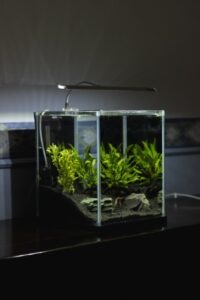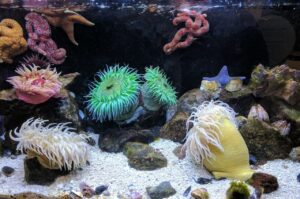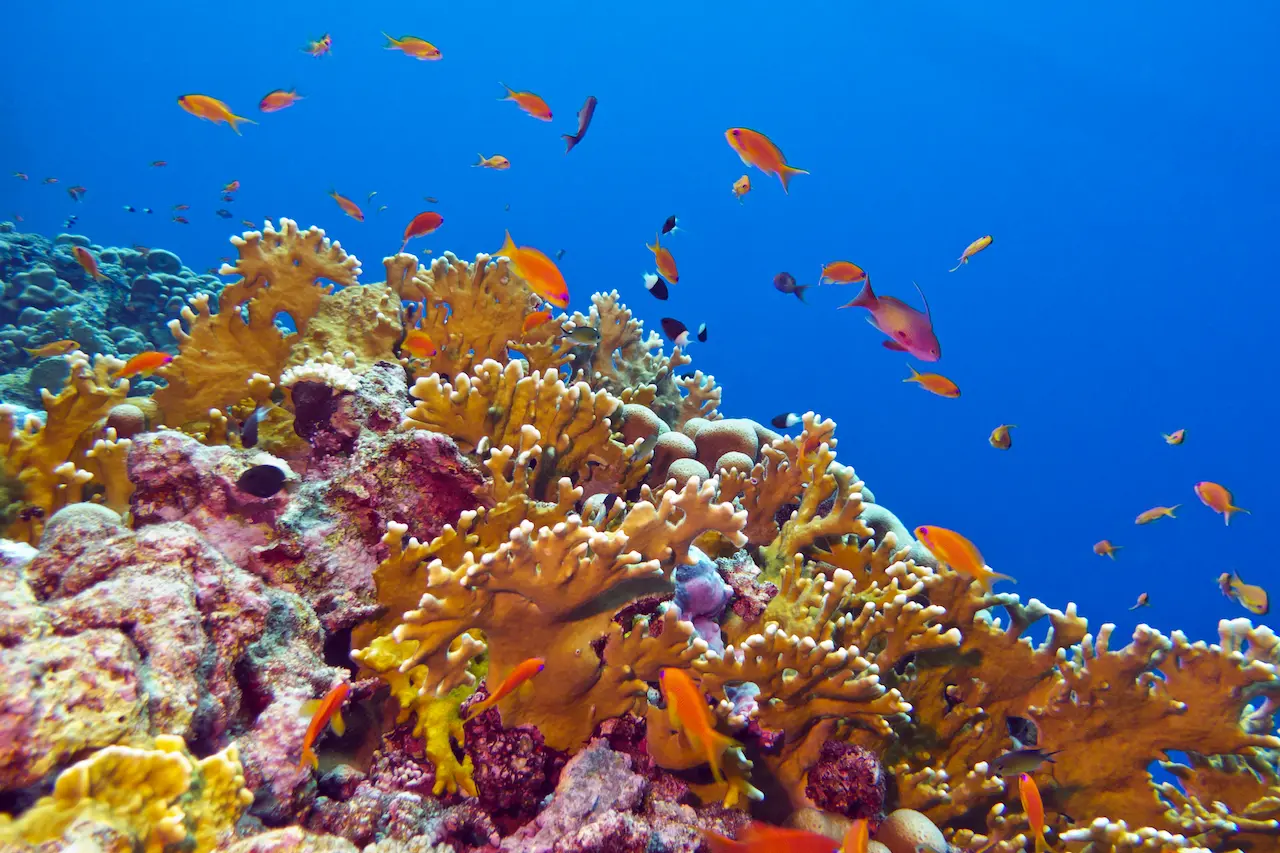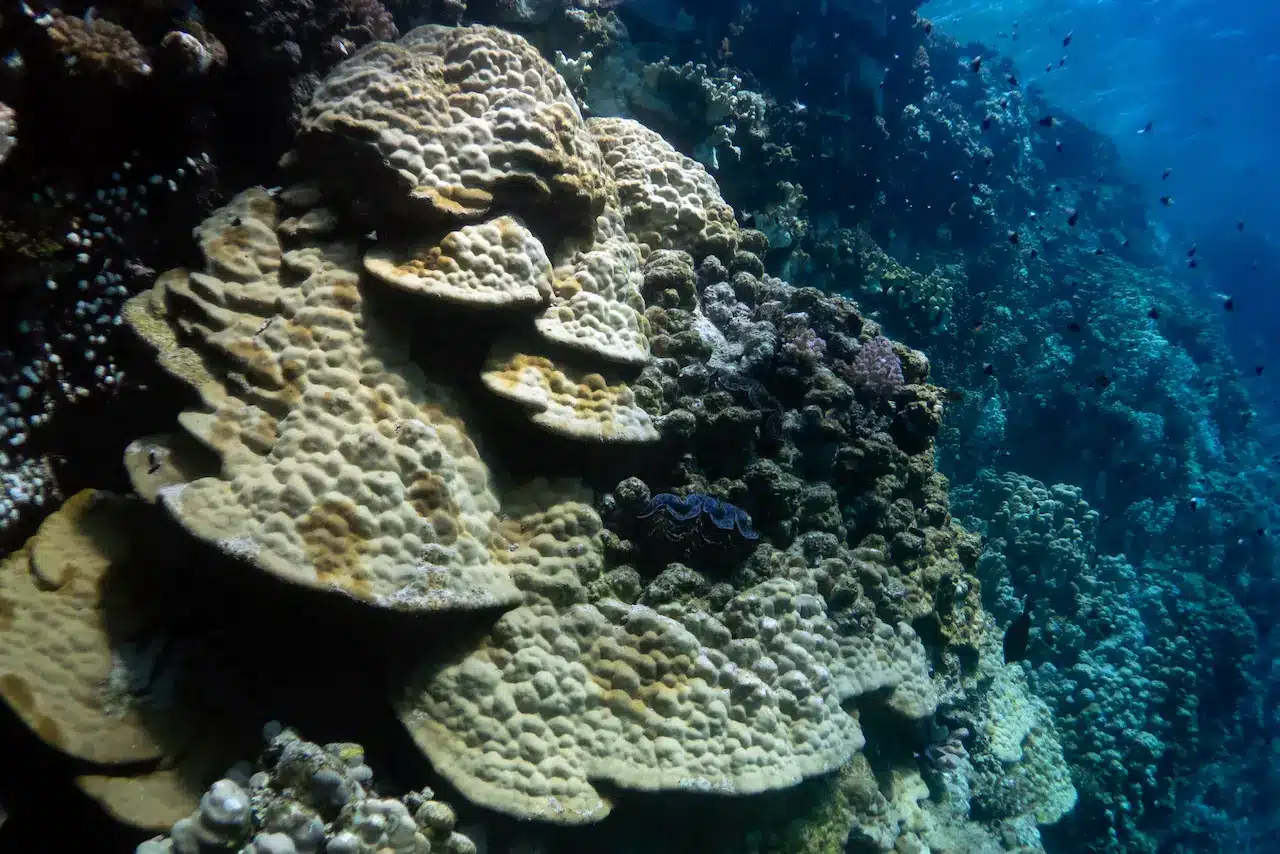What Do I Need To Start A Coral Reef Tank And What To Know
Freshwater aquariums are stunning and require some work to keep them in good condition. Saltwater aquariums are even more beautiful as their freshwater counterparts, but they require more effort to maintain. When you go to your local pet shop, you will notice that saltwater varieties are more expensive. Before you start this hobby, it is important to consider the cost. When your $3 goldfish dies it’s one thing, but when you lose your $35 or $100 fish, you might be reluctant to buy a new one.
Table of Contents
ToggleThe monthly costs of running a saltwater aquarium, if properly maintained and set up, can be hundreds of dollars. It doesn’t mean you can’t keep a small and inexpensive fish tank. If you’re not prepared to spend the time and money necessary to get it right, you should avoid this expensive and beautiful aquatic hobby.
It takes a lot to maintain and plan a saltwater tank, but it can be a fascinating hobby to observe. You don’t have to be intimidated by costs or work involved in maintaining a saltwater tank. It can be a fun, rewarding and educational hobby.
If you decide to invest in this fun and rewarding hobby, you should know that your saltwater aquarium’s success will be largely dependent on how well you understand your system, its inhabitants, and the attention you give it.
Plan ahead before you start. Whether you are setting up a brand new aquarium, changing an existing freshwater tank to saltwater or upgrading a fish tank to a coral tank, planning is essential. Then, start assembling your system. Research all the different system designs available and what supplies and equipment are required for each.
Here is a list with the most basic components required to set up a saltwater aquarium:
- Tank
- Stand by
- Canopy (cover for tank)
- Filtration system
- Protein skimmer
- Backup power supply
- Substrate
- Lights
TANK AND STAND
The size of the tank is important for stability. The larger the tank, the longer it will take to change it. This is true for many things.
A beginner saltwater aquarium should not be less than 55-60 gallons. Two main reasons:
- Lack of stability (changes are too rapid) and cost to setup a smaller tank.
- The cost of livestock is the same for both tanks, so there are no savings.
You may not have as much success with a small tank, so you might not continue this hobby and graduate to a larger tank. The larger tank is easier to maintain, and you will be more likely to stick with it if you start with a bigger tank.
Tanks are available in a variety of sizes, shapes, and materials. The majority of fish shops will have a standard line of tanks in sizes ranging from 10 to 100 gallons. Shapes range from square to hexagon, and oblong to rectangular. Acrylic tanks are the new trend. In the past, glass tanks were the most popular. Acrylic tanks are stronger because they use solvent to bond the corners instead of silicone. Acrylic tanks are harder to clean, because algae can be difficult to remove. Acrylic tanks are also very scratch-prone. However, you can polish them out, unlike a glass tank. The choice will come down to personal preference.
The stand must be strong enough to support the weight of the “filled” tank with all its equipment. The stand shouldn’t wobble or be in a place where it could be bumped. While wood stands are strong, they can be damaged by spilled liquids when cleaning or feeding fish.
FILTERING SYSTEM
Two of the most common methods for filtration in marine aquariums are “under-gravel combined with a canister” and “external trickle wet/dry filters”.
Filters under-gravel or canisters have been used for over 30 years. They are easy to install and work well. Over the years, canister filters have evolved to be much more than just a mechanical filter. These filters combine mechanical, biological, and chemical filters in one compact package. A single canister unit is simple and efficient. It can solve all your filtration requirements.
The plumbing requirements for Wet/Dry trickle filters are more complex, but their effectiveness is much higher. These “Trickle” or Wet/Dry Filters are very simple devices that increase the amount of DO (dissolved oxygen) in tank water. These filters are very popular among saltwater aquarium hobbyists. They are also easy to install.
All aquariums have a tendency to accumulate various organic compounds such as proteins and enzymes at the surface. These compounds create a layer that prevents gases like oxygen and carbon dioxide from being transferred between the water and atmosphere. A box or pipe is placed in the middle or corner of the aquarium. The Overflow can be angled upwards or rise from the bottom of the aquarium. The Overflow allows water to be skimmed or dropped into the surface of the tank. This removes the organic layer and allows the tank to breath. The water from the Overflow is routed down the Wet Dry Trickle Filter system and out the bottom.
Acrylic tanks with canister filters and under-gravel filtering have slots along the back of the tank, at the top edge, to allow for the power filter, canister filters, airlines and power cords.
If you have a glass tank or if you have one already, but do not wish to drill holes into it, there are external overflow systems. These units are made up of a surface skimming box that is sunk into the water and allows the surface water to drain off. This External unit draws the skimmed-off water from the skimmer as the water fills it. It then sends the water over the edge of your aquarium and into the pre-filter.
The external system is more complex and requires more maintenance. This is because the siphon tubes are prone fill with air. This can affect the flow of water all the way to the return pump or stop it from siphoning.
In the Overflow Box or External Overflow one can place a filtering media such as a spiral pad to separate out or trap the large debris pieces that are drawn into overflow system. The mechanical filtration is the first filtration type. This media, called a ‘prefilter’, is used to separate or trap large pieces of debris that are drawn into the overflow system. Mechanical filtration uses a media to trap particles while allowing water to pass. This pre-filter must be replaced or cleaned on time.
The Under gravel or Canister Filter approach has a glass tank with a plastic strip that can be easily cut to fit the canister filter, the power filter, the airline, and the power cords.
PROTEIN SKIMMERS
The second most important part of a healthy marine system is protein skimming. There are systems which claim to be “skimmer free”, but DOC (dissolved organic compounds), phenol oil, and other yellowing agents can cause a nuisance. Only a active protein skimmer will eliminate this. Protein skimmers remove biological waste before it is processed by your biological filter.
BACKUP POWER SUPPLY
You will likely experience power outages in the near future. You can live without the lights for days, but without oxygen, circulation, and the right temperature, your biological filter and corals, critters, and invertebrates will die within a few hours.
When you add up the cost of replacing your tank critters and live sand, rock, or corals you’ll quickly realize that an alternative power source isn’t that expensive. You may be surprised to find out that a small portable generator can come in handy for your daily life
SUBSTRATE
It is important to choose the correct substrate material for your saltwater aquarium. The substrate is more than just a decorative element in your tank. It also serves many functions.
The biological filter is an important part of any aquarium. If you use non-living media instead of live sand in the aquarium, the non-living material will turn “live” after the tank has gone through the cycle and matured.
Many types of marine invertebrates and fish that live at the bottom of the ocean can find refuge in this substratum. These include wrasses of all kinds, gobies/blennies (or blennies), shrimps, starfishes etc. These animals prefer a medium with a finer to smaller grain.
Sea cucumbers, for example, are invertebrates that eat substrate and extract organic material from it. These animals rely on substrate for nutrition and should therefore be given a medium with a finer grain.
The substrate is home to other small critters such as amphipods (small worms), copepods (small worms) and marine worms. These critters are food for other marine animals.
You can use it as part of your bio filter or to house small sand-dwelling critters. It is important to choose a substrate which will not move around in the currents of the water.
You will need to think about not only the appearance of your tank but also what it will be used for. Is it a filter system, or is it just decorative? And will it be suitable for the marine life you plan to keep in the tank? It is best to select a substrate that contains a lot of calcium and comes from the ocean. Some of the more colorful and attractive options could contain harmful materials for your fish.
LIGHTS
Aquarium lighting is an important aspect that’s often forgotten when it comes to maintaining a healthy aquarium. Lighting in your aquarium affects not only the coloration, but also the reproduction cycle, nutritional requirements and algae production. Lighting can also have a significant impact on the temperature in your aquarium. This is one of the main things that you need to control in your tank.
For reef tanks that contain live corals and invertebrates like anemones, clams and other invertebrates, you need to use the right lighting intensity. The photosynthesis system is used by many corals to feed. Proper lighting is necessary for good health and energy generation. Your corals and other invertebrates will not thrive if they do not get enough light to support a healthy photosynthesis.
We will be discussing the different types of saltwater habitats you can create for your saltwater aquarium, along with the species that are appropriate to each. When “designing” and “creating” your saltwater aquarium, it is important to know what types of marine life will be in your tank. You can’t simply throw any fish together because they need different environments to flourish. Next article we will provide more clarity about which types of fish work together.
Summary
Make sure to always read ask much as you can, ask questions at your local aquarium shop and learn from people in online groups and forums. The more you know, the less mistakes you will make and they cost money!


